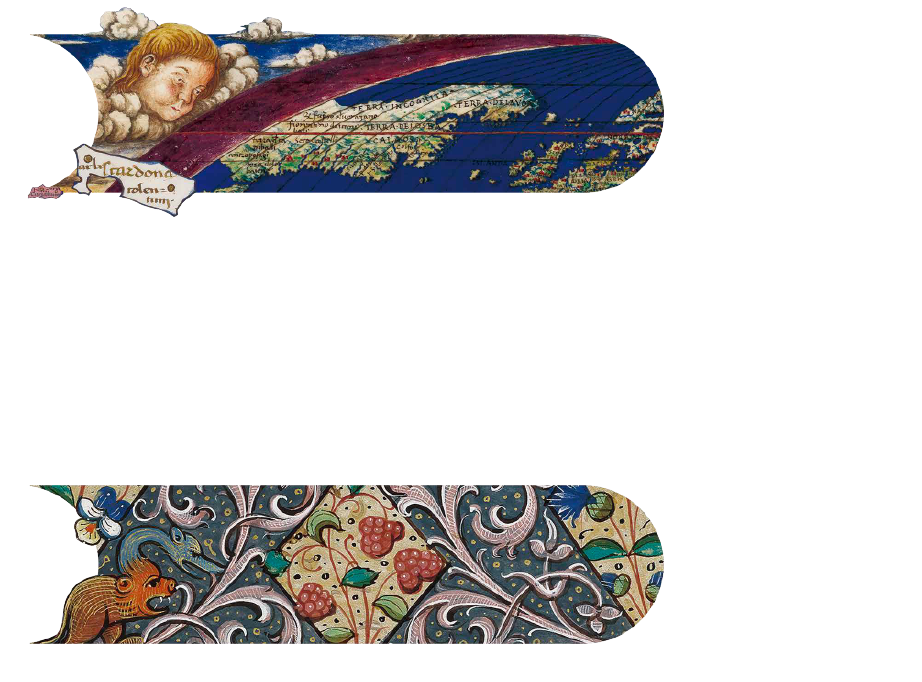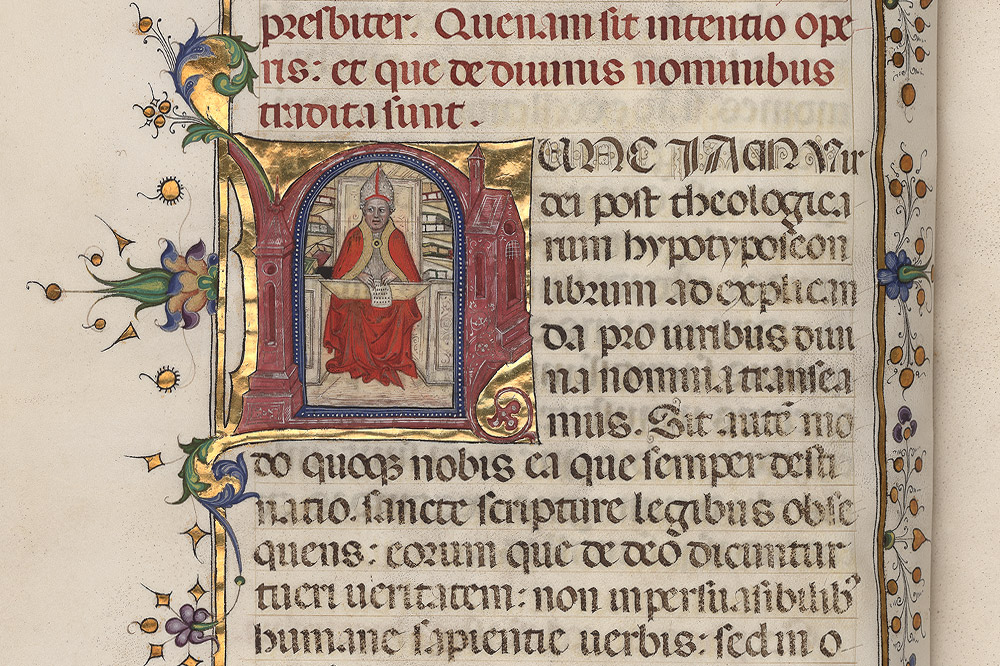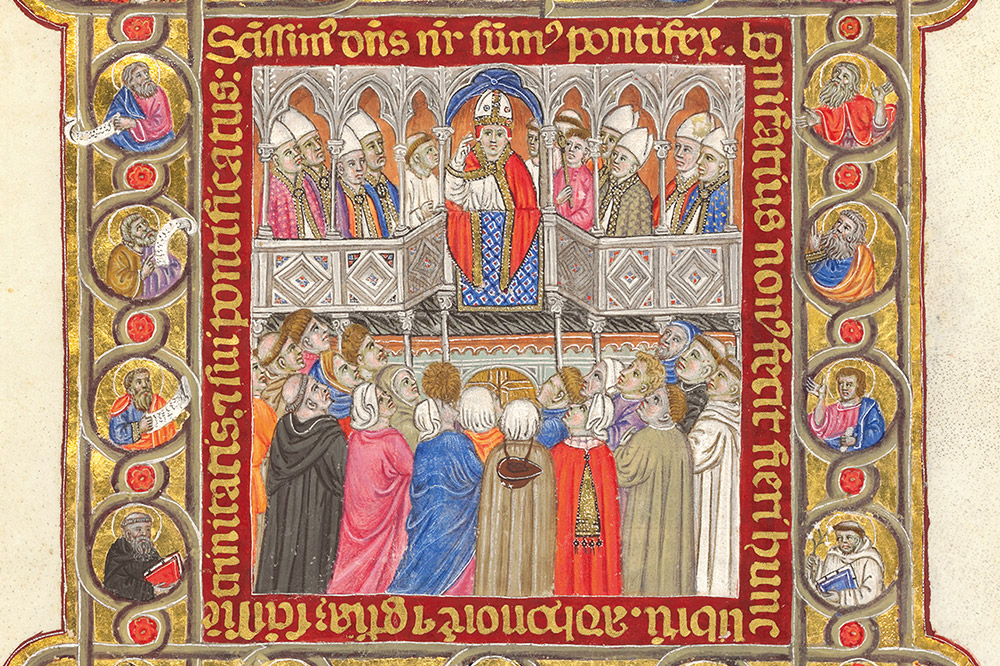The Beginnings of the Biblioteca Apostolica Vaticana
Various papal libraries have existed in the past and have then gone missing over the centuries. The Biblioteca Apostolica Vaticana of today was founded by Pope Nicholas V (r. 1447-1455) in the mid-15th century with the aim of the "common utility of learned men." Starting from a small collection of codices, he sent his emissaries to the world then known to procure manuscript books following a precise plan to create a universal library according to the criteria of humanistic culture, open to all disciplines.
At the time of his death, there were over 1,200 manuscripts. The work of research and collection of books continued with his successors, and Pope Sixtus IV (r. 1471-1484) reorganized the Library by expanding its facilities, establishing a staff and ensuring stable funding. In 1481 there were 3,500 manuscripts, the largest collection then in existence.
During this period, some very important codices became part of the Library, such as the Codex Vaticanus (B) (Vat.gr.1209), the oldest almost complete Bible in Greek from the 4th century, the Vergilius Romanus (Vat.lat.3867), with works by the Latin writer Virgil (70-19 BC) from the 5th-6th century, and others of great importance for the history of literature with works by Terence (c. 195/185-c. 159? BC), Julius Caesar (100-44 BC), Pliny the Elder (23/24-79), Sallust (86-c. 35 BC) and Seneca the Elder (54 BC-AD 39), made in the 9th century.
Corpus Dyonisianum nella Versione Latina di Ambrogio Traversari (Corpus Dyonisianum in the Latin Version of Ambrogio Traversari)
- Dionigi l'Areopagita (Dionysius the Airopagite, c. 1st century)
- Latin|Mid-15th century|Italy|Membrane|Latin|344×240×80 mm
- Vat.lat.171|Original|© Biblioteca Apostolica Vaticana
The manuscript features the coat of arms of Nicholas V (r. 1447-1455) and autograph notes and corrections by the founding Pope of the Biblioteca Apostolica Vaticana. It contains the Latin version, edited by the humanist monk Ambrogio Traversari (1386-1439), of an important collection of late ancient theological treatises in Greek attributed to Dionigi l'Areopagita (c. 1st century). In particular on f.138v, where a leaf decoration in gold and color appears on all four sides, and the letter N with a prelate (perhaps the Pope himself) in the chair in the act of writing a sheet surrounded by a library.
Il Pontificale di Bonifacio IX (The Pontifical of Boniface IX)
- Latin|1389-1404|Membrane|320×225 mm
- Vat.lat.3747|Image reprinting|© Biblioteca Apostolica Vaticana
A richly illuminated luxury specimen, it has long been considered a pontifical, or rather a collection of texts relating to the liturgical actions presided over by the bishop or the Pope. On the other hand, it has recently been shown that it is a Praeparatio ad Missam (Preparation for Mass), that is, a series of prayer texts in preparation for the celebration of the Eucharistic liturgy, for the use of the pontiff. It was commissioned by Pope Boniface IX (r. 1389-1404) himself, as shown by his coat of arms – present on several pages – and by the writing, laid out in gold on a purple background, which runs around the miniature on f.39v: "Sanctissimus dominus noster summus pontifex, Bonifatius nonus fecit fieri hunc librum, ad honorem et gloriam sanctissime Trinitatis, et sui pontificatus (Holy Lord, Pope Boniface IX has made this book, to the honor and glory of the Holy Trinity and his pontificate)".







